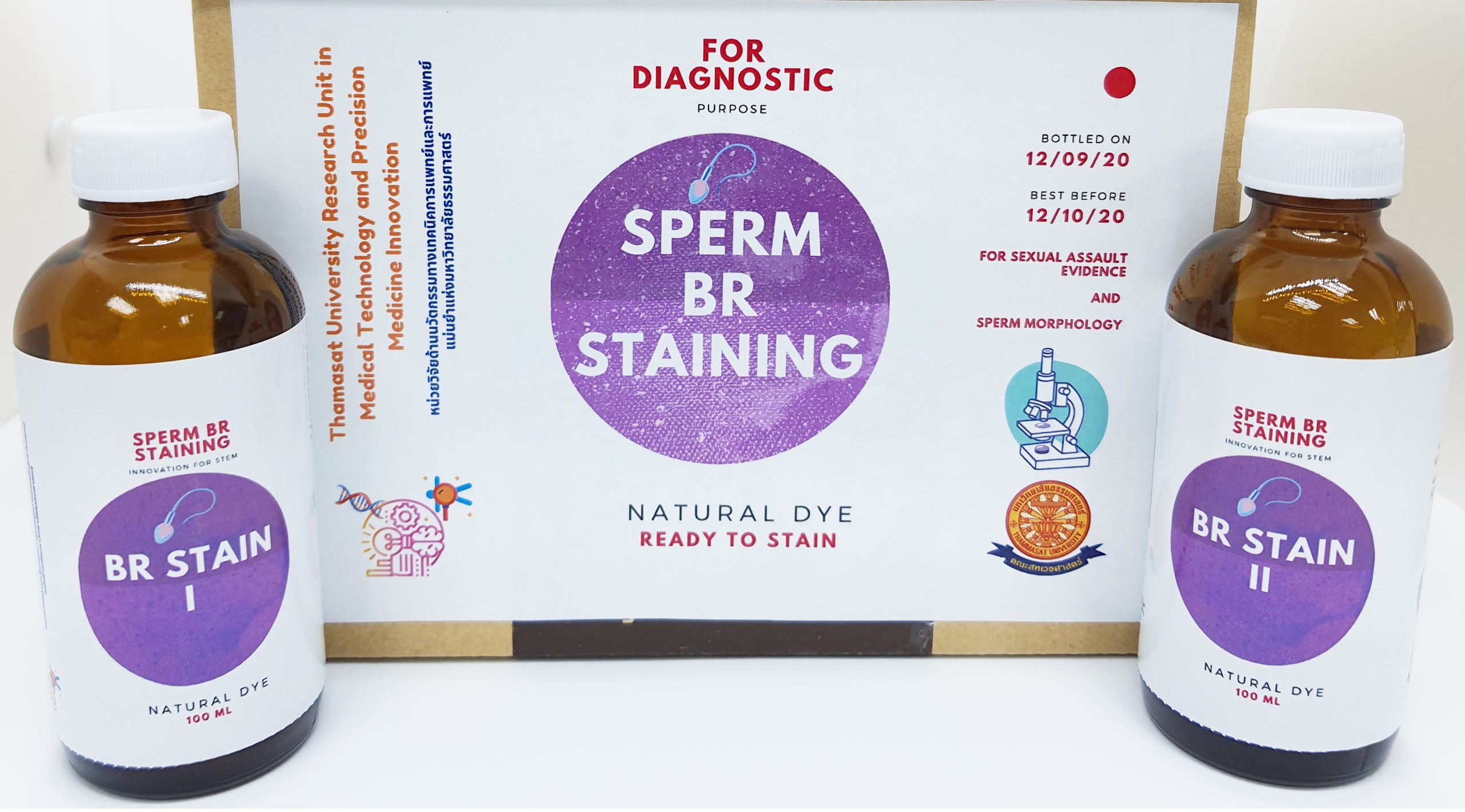There is an age range that affects fertility in women, that is, over the age of 35, having a child is considered too late. For females who consult a doctor, they will be able to check their hormones and ovaries, while for males, the easiest thing to examine is their semen.
For sperm analysis, Thailand is now marking a remarkable progress by a team of researchers from the Faculty of Allied Health Sciences,
Thammasat University that has invented the “sperm staining with black glutinous rice extract” technique to assess the shape-fertility of sperms along with estimating the proportion of healthful sperms to the total sperm count.
This invention is entitled with the official name, "BR dye", and the research work of Asst. Prof. Dr. Chollanot and Asst. Prof. Dr. Sirinart Chomean, which recently won the Outstanding Research Award of the Year 2021 from the National Research Council and has been published in three other international academic journals.
“The principle is that we use extract from black glutinous rice together with cationic additives to aid in the staining of the genetic material in the nucleus of the cell,” explained Asst. Prof. Dr. Chollanot.
Asst. Prof. Dr. Chollanot explained that sperm staining to see the healthiness of the sperms is considered an important criterion that leads to the right treatment process, which is in line with the precision medicine policy and the use of reproductive technology to help solve infertility problems.The shape of the sperm is an indicator of whether or not the males are ready to have children, and will it be easy or difficult to have children? Of which, in the past, we had to rely on synthetic dyes that had to be imported from abroad only for them to stain and allow the structures of the sperm around the head, mid piece and tail to be visible. But now Thammasat is able to successfully invent a replacement dye and it also has a very high efficiency.
The main objective of this research is to seek dyes that are as effective as synthetic dyes imported from abroad. The synthetic dyes are made from tree barks, in which the hospital does not only use to stain sperm but has also been used to stain other substances such as body tissues. Therefore, in the future there is a possibility that the dyes will be in short supply.The raw materials that we extract do not require rice grains as most of the colour pigment is in the rice husks, therefore, using only rice husks or bran are sufficient. As for the rice grains, we can cook it. This is considered adding value to rice husks and bran.
For the success of "BR dye", it will be developed further to stain the sample of vaginal discharge from wet mount (vaginitis test) in the case of women being assaulted. This is due to the fact that this type of dye can be used to stain both women's cells and sperms.
However, in the past, there has been an experiment using the vaginal discharge tested in the laboratory as a sample, it was found that the dye extracted from black glutinous rice was as effective as those sold in the market. This sample can be used for further litigation.
More than that, after developing the dye from the aqueous form into a high-quality “powder form”. The pigment powder will then be adjusted into distinct formula suitable for different types of cells or samples, upgrading products as well as formula and user manual which will reduce the procedures and workload of hospital personnel as well.
